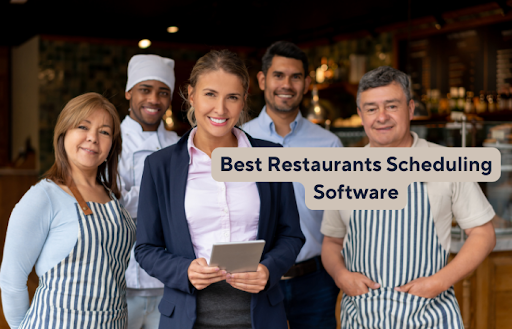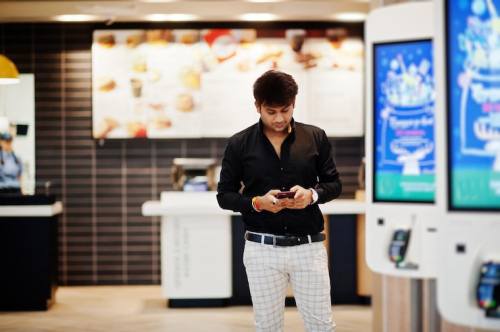Quick Listen:
In the fast-paced world of multi-unit restaurant operations, managing a workforce across multiple locations is a high-stakes balancing act. Picture a regional manager on a hectic Friday night, grappling with a chaotic spreadsheet to staff a chain’s flagship location while juggling requests from a new outpost across town. Double-booked servers, missed vacation requests, and staffing shortages are all too familiar. In 2025, as the restaurant industry rebounds from post-pandemic challenges and chains expand rapidly, outdated scheduling methods pen-and-paper or cumbersome Excel grids are no longer viable. Restaurant scheduling software has emerged as a transformative solution, enabling chains to synchronize their teams, optimize labor, and thrive in a competitive landscape.
The global market for restaurant scheduling software, valued at $1.35 billion in 2024, is projected to grow to $1.46 billion in 2025 and reach $2.8 billion by 2033, driven by a robust 7.9% CAGR. The United States, a key player in this growth, is seeing restaurants increasingly adopt digital tools to streamline reservations, optimize seating, and enhance customer experiences. With approximately 70% of restaurants worldwide embracing cloud-based platforms, the shift toward technology-driven workforce management is undeniable, particularly for multi-location chains navigating diverse operational demands.
Revolutionizing Workforce Management
Operating a single restaurant is challenging, but managing a network of locations each with unique peak hours, staff dynamics, and local regulations is a logistical marathon. Advanced scheduling software is rewriting the rules with cutting-edge features. AI-powered demand forecasting, for example, analyzes historical sales, weather patterns, and local events to predict staffing needs with pinpoint accuracy. Cloud-based platforms, now used by 70% of restaurants globally, enable managers to create and update schedules from anywhere, integrate with point-of-sale (POS) systems, and instantly notify staff via mobile apps.
Mobile-first solutions are empowering hourly workers like never before. Employees can view shifts, request swaps, or pick up extra hours through intuitive apps, reducing the administrative burden on managers. Compliance tools are equally critical, automatically flagging overtime risks or ensuring adherence to state-specific labor laws a must for chains spanning multiple jurisdictions. Employee self-service features further enhance flexibility, allowing workers to manage availability or submit time-off requests seamlessly, fostering a sense of autonomy in an industry plagued by high turnover.
Real-World Impact
The data paints a compelling picture, but the true value of scheduling software shines in real-world applications. Some quick-service chains have reported significant reductions in overtime costs after implementing AI-driven scheduling tools. By analyzing sales trends and foot traffic, these tools can identify overstaffing patterns and recommend leaner shifts without compromising service quality. Similarly, a full-service chain operating across multiple states integrated scheduling software with real-time POS data, aligning staffing with table turnover rates. This led to fewer understaffed shifts and improved customer satisfaction, as diners faced shorter wait times.
Predictive analytics is another game-changer. High-traffic restaurants often struggle with last-minute callouts, leaving managers in a bind. After adopting software that cross-references historical staffing data with reservation trends, some have reported significant reductions in understaffing incidents. Regional managers, previously overwhelmed by paperwork, now rely on centralized dashboards that provide a real-time overview of labor costs, compliance risks, and staffing gaps across all locations. As one manager noted, such tools act as a strategic partner for operational efficiency.
Case Study: 7shifts
Founded in 2014 by Jordan Boesch, 7shifts was born out of real-world frustration. Boesch witnessed his father’s struggles with scheduling at his Quiznos restaurants, inspiring a cloud-based platform that simplifies workforce management. Today, 7shifts is a leader in restaurant scheduling, offering tools that streamline shift planning, enhance employee communication, and integrate with POS systems.
Overcoming Adoption Challenges
While the benefits are clear, transitioning to scheduling software is not without obstacles. Many chains remain tethered to legacy systems, such as outdated POS platforms or fragmented scheduling tools, creating data silos that obscure labor needs across locations. Standardizing processes across diverse sites is another challenge a compact urban bistro operates differently from a sprawling suburban restaurant, and a rigid, one-size-fits-all approach can disrupt operations.
The human element also poses hurdles. Long-time employees accustomed to paper schedules may resist adopting mobile apps, while managers may fear that automation undermines their authority. Additionally, overzealous cost-cutting algorithms risk scheduling workers for grueling shifts or reducing hours, which can erode morale. Compliance remains a complex issue, as fair workweek laws vary by region, requiring software that can adapt to nuanced regulations to avoid costly penalties.
The Rewards of Going Digital
Despite these challenges, the rewards of adopting scheduling software are substantial. Centralized platforms provide a comprehensive view of labor costs, enabling chains to identify inefficiencies, such as overstaffing during slow periods. Transparent, app-based schedules boost employee retention by offering flexibility workers who can easily swap shifts or plan around personal commitments are less likely to leave. In an industry where turnover is a persistent issue, this is a significant advantage.
Data-driven insights further elevate decision-making. Real-time analytics allow managers to adjust staffing based on concrete metrics, such as increased demand during local events or quieter weeknights at suburban locations. Integration with HR systems streamlines onboarding, enabling new hires to join schedules and access training materials effortlessly. Some chains are even leveraging customer loyalty data to align staffing with dining trends, ensuring optimal service during peak hours.
The Future of Restaurant Operations
As the restaurant industry evolves, scheduling software is becoming the cornerstone of multi-unit operations. Industry experts predict a future where scheduling tools integrate seamlessly with POS, payroll, and HR systems, creating a unified tech ecosystem that optimizes staffing, sales, and customer experiences. For chains, the stakes are high in a competitive labor market, intelligent scheduling is not just a convenience but a strategic necessity.
When selecting software, chains should prioritize flexibility, ensuring platforms can adapt to diverse location needs and integrate with existing systems. Scalability is equally critical a solution that works for a handful of restaurants must handle the demands of rapid expansion. User experience is non-negotiable; clunky interfaces will frustrate employees and hinder adoption. The success of platforms like 7shifts, rooted in addressing real-world pain points, underscores the importance of solutions grounded in practical needs.
Shift Smarter Now
Restaurant scheduling software is more than a tool for filling shifts it’s a catalyst for building agile, engaged, and efficient workforces. As multi-location chains navigate growth and complexity, those that embrace this technology will gain a competitive edge, delivering exceptional service while keeping labor costs in check. In the race to master the next dinner rush, smart scheduling is the key to staying ahead.
Disclaimer: The above helpful resources content contains personal opinions and experiences. The information provided is for general knowledge and does not constitute professional advice.
You may also be interested in: 7 Best Restaurant POS Systems 2024
Scattered systems and manual processes erode your restaurant’s margins daily. Milagro unifies POS, digital menus, online ordering, staffing, loyalty, and AI-powered marketing into one platform, slashing costs and enhancing guest loyalty. Reclaim control over operations and drive revenue growth. Streamline your workflow and elevate profitability. Schedule your Milagro demo today!
Powered by flareAI.






